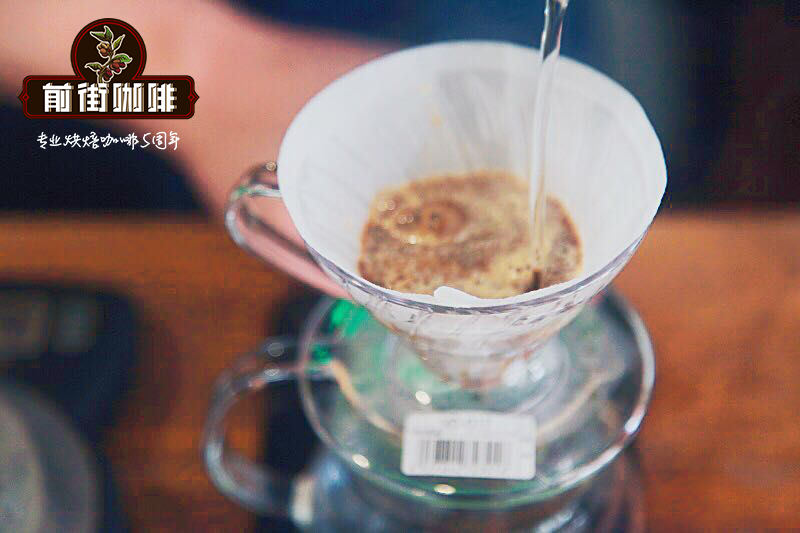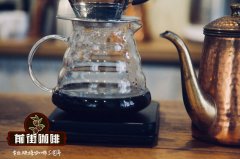A brief introduction to the characteristics of Guatemalan Coffee the altitude of the coffee classification method

Professional coffee knowledge exchange more coffee bean information please follow the coffee workshop (Wechat official account cafe_style)
Qianjie-Kenya Coffee grading system sharing
Guatemala is located in the center of North and South America, and its geographical location occupies an important position in Central America. In this country, rivers and lakes dot the landscape, while equatorial forests and plain jungles cover the land. There are also untapped volcanic beaches on the Pacific and Caribbean coasts. As a result, Guatemalan coffee has a strong aroma of tobacco, almond, caramel, citrus and cream.
Guatemala's fertile volcanic soil gives birth to a unique flavor of boutique coffee beans: Antigua coffee. This bean belongs to bourbon coffee beans, is one of the more sour varieties, taste mellow and slightly wild cup of Guatemalan Antigua coffee, the charm lies in its balanced and refreshing fruit acidity, rich spice flavor, unique smoky taste, seems to tell us about the desolate history of Antigua, Guatemala, let us see the sudden disappearance of the mysterious Mayans multiplied in the ancient land History has brushed away their existence, and history has achieved their eternity.
Guatemala mountain highest altitude: 2000m, generally the highest planting area is 1700m above sea level, the lowest planting area is about 700m, of course, it does not rule out the planting area below 600m.
Graded according to altitude
Grade
Altitude
SHB (Strictly Hard Bean)
Extremely hard bean
1600-1700m
FHB (Fancy Hard Bean)
Excellent hard bean
1500-1600m
HB (Hard Bean)
Hard bean
1200-1400m
SH (Semi Hard Bean)
Slightly hard beans
1100-1200m
EP (Extra Prime)
Extra high quality washed beans
900-1100m
PW (Prime Washed)
High quality washed beans
600-9001m
EGW (Extra Good Washed)
Special quality water washed beans
700-850m
GW (Good Washed)
Washed beans with good quality
700M
SHB is the world's highest quality raw coffee bean: rich in layers, full-bodied, acidity and aroma.
Knowledge giveaway: the Guatemalan Coffee Association established the Guatemalan coffee brand and defined coffee from eight different origins under the slogan "one Rainbow Choice (A Rainbow of Choices)".
END
Important Notice :
前街咖啡 FrontStreet Coffee has moved to new addredd:
FrontStreet Coffee Address: 315,Donghua East Road,GuangZhou
Tel:020 38364473
- Prev

A brief introduction to the characteristics of Kenya java coffee beans what are the aa grades of coffee beans?
Professional coffee knowledge exchange more coffee bean information please follow Coffee Workshop (Wechat official account cafe_style) Front Street-Kenya Coffee grading system sharing Kenya is typical of African lowland cultivation, growing high-quality Arabica coffee beans are fleshy, full-bodied, moderate acidity, complex aroma, fruity or spicy, suitable for deep roasting. Kenny.
- Next

How much is the price of rose summer coffee? How much is a kilogram of rose summer coffee beans? How much is a cup of rose summer coffee
Professional coffee knowledge exchange More coffee bean information Please pay attention to coffee workshop (Weixin Official Accounts cafe_style) Front Street-Emerald Manor Rose Summer, hand brewing method sharing Rose Summer is the champion of coffee varieties, no matter in flavor or coffee taste, people are deeply fascinated, this is Rose Summer coffee unforgettable
Related
- Beginners will see the "Coffee pull flower" guide!
- What is the difference between ice blog purified milk and ordinary milk coffee?
- Why is the Philippines the largest producer of crops in Liberia?
- For coffee extraction, should the fine powder be retained?
- How does extracted espresso fill pressed powder? How much strength does it take to press the powder?
- How to make jasmine cold extract coffee? Is the jasmine + latte good?
- Will this little toy really make the coffee taste better? How does Lily Drip affect coffee extraction?
- Will the action of slapping the filter cup also affect coffee extraction?
- What's the difference between powder-to-water ratio and powder-to-liquid ratio?
- What is the Ethiopian local species? What does it have to do with Heirloom native species?

